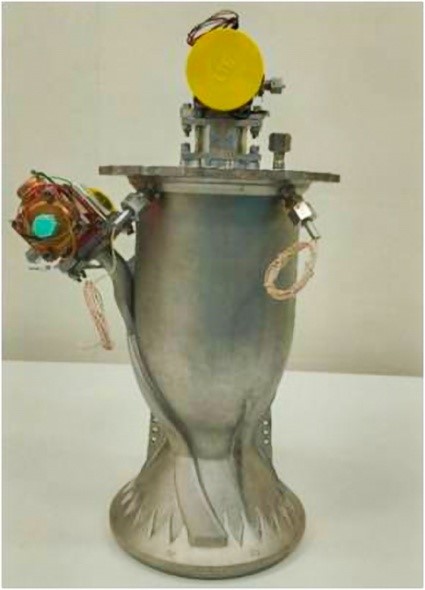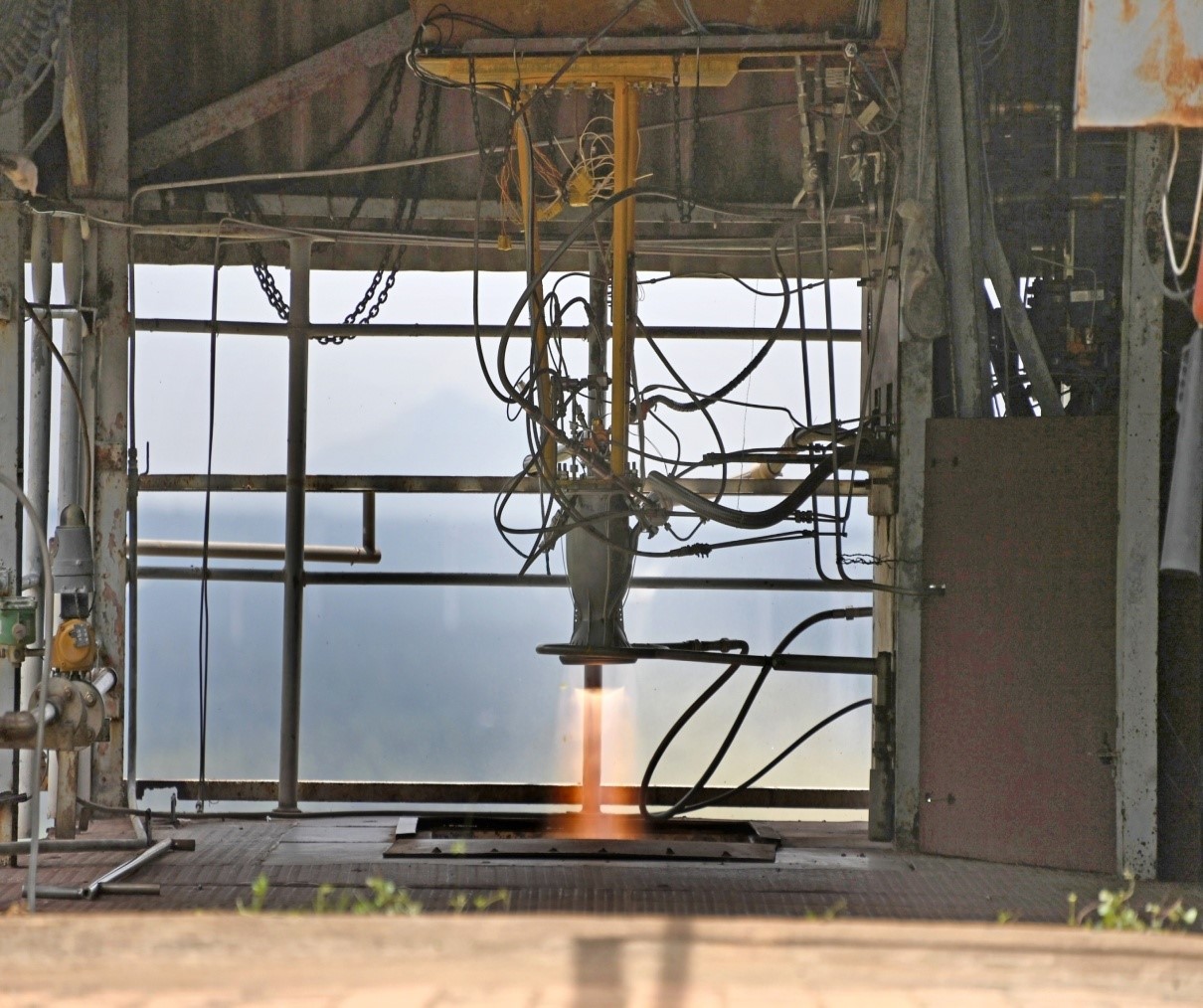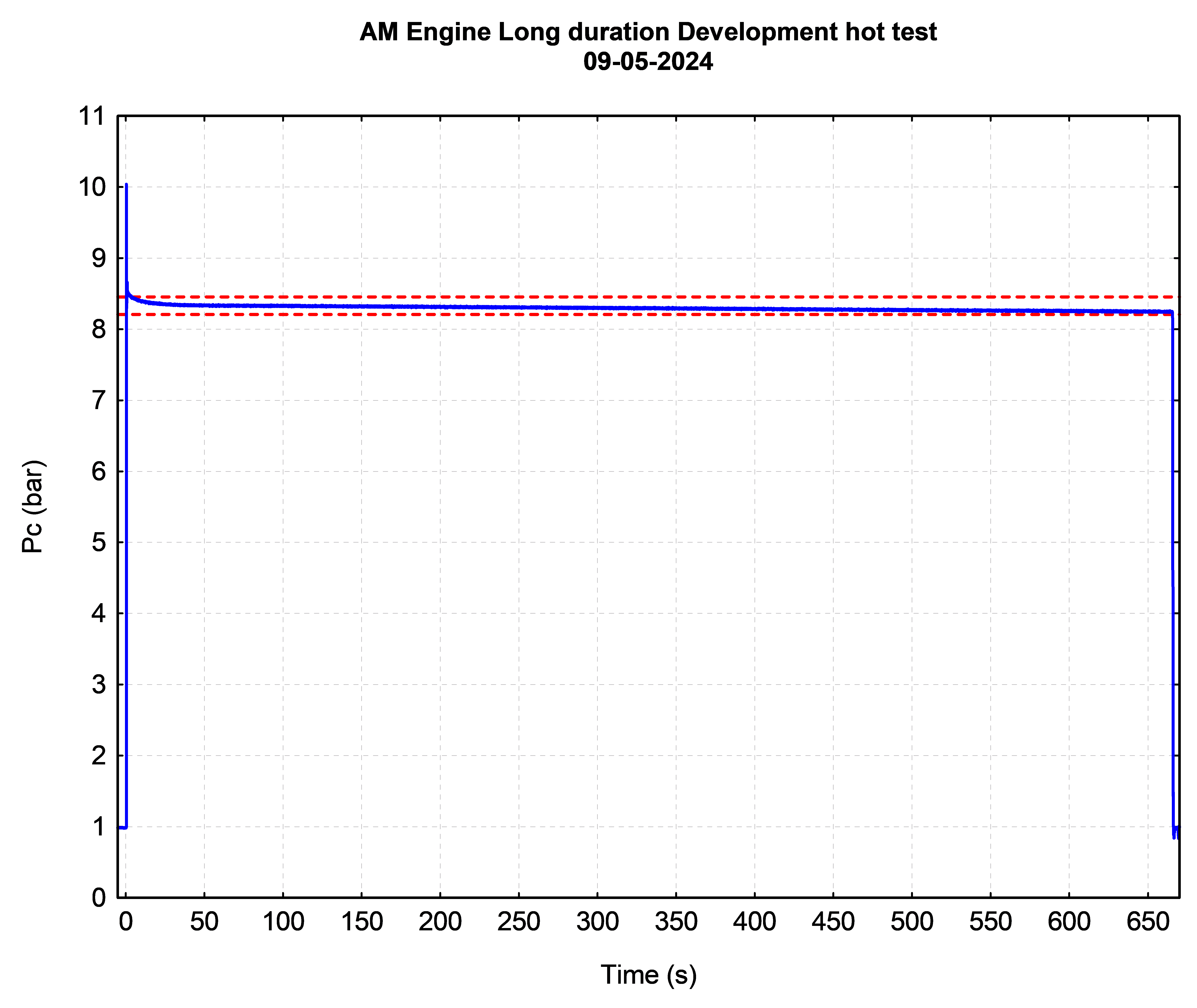ISRO achieved a major milestone with the successful hot testing of liquid rocket engine manufactured through Additive Manufacturing (AM) technology for a duration of 665 s on May 9, 2024. The engine used is the PS4 engine of PSLV upper stage.
The PS4 engine manufactured in the conventional machining and welding route has been in use for the fourth stage of PSLV which has a thrust of 7.33 kN in vacuum condition. The same engine is also used in the Reaction Control System (RCS) of the first stage (PS1) of PSLV. The engine uses the earth-storable bipropellant combinations of Nitrogen Tetroxide as oxidizer and Mono Methyl Hydrazine as fuel in pressure-fed mode and was developed by the Liquid Propulsion Systems Centre (LPSC), ISRO.
LPSC redesigned the engine making it amenable to the Design for Additive Manufacturing (DfAM) concept thereby gaining considerable advantages. The Laser Powder Bed Fusion technique employed has brought down the number of parts from 14 to a single-piece, and eliminated 19 weld joints, saving significantly on the raw material usage per engine (13.7 kg of metal powder compared to the 565 kg of forgings and sheets for conventional manufacturing process) and reduced 60% in the overall production time. The manufacturing of the engine was done in the Indian industry (M/s WIPRO 3D), and the engine was hot tested at ISRO Propulsion Complex, Mahendragiri.
As part of the development programme, the injector head of the engine was realised and successfully hot tested earlier. Detailed flow and thermal modelling, structural simulation, and cold flow characterisation of the proto hardware were carried out to gain confidence for the hot test. Consequently, four successful developmental hot tests of integrated engine were conducted for a cumulative duration of 74 s which validated the engine performance parameters. Furthermore, the engine was successfully tested for the full qualification duration of 665 s and observed that all the performance parameters were as expected. It is planned to induct this AM PS4 engine into the regular PSLV program.
The performance of the engine during the long-duration test is shown in the following graph.
Indian Space Program: News & Discussion
Re: Indian Space Program: News & Discussion
ISRO successfully conducts long-duration hot tests of Additive Manufactured Liquid Engine.
Re: Indian Space Program: News & Discussion
What are its physical dimensions? Anybody know?Ashokk wrote: ↑10 May 2024 21:33 ISRO successfully conducts long-duration hot tests of Additive Manufactured Liquid Engine.
...
Re: Indian Space Program: News & Discussion
While the laser powder bed sintering is a powerful technique, I wish India could learn even more powerful techniques like Electron Beam Melting (which itself has been around for a few decades).Ashokk wrote: ↑10 May 2024 21:33 ISRO successfully conducts long-duration hot tests of Additive Manufactured Liquid Engine.
...
Electroforming is a much older and more traditional form of additive fabrication which I suspect could produce stronger metal parts than all other methods, if only it could be as precisely controlled as the others are.
Presumably the same dimensions as traditional PS4 engine. Couldn't find those details on google, though.
Re: Indian Space Program: News & Discussion
Blue Origin: Gopichand Thotakura becomes first Indian space
Excerpts: )
)
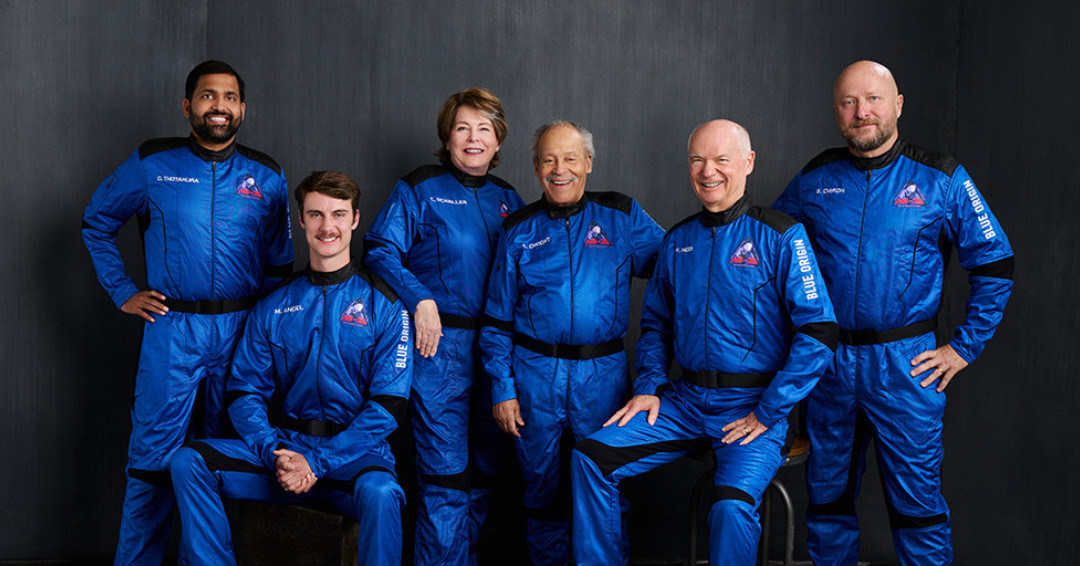
Excerpts:
(Small tidbit: One of the crew member is my close family relative -- so many of us were at launch site and very excitedTIMESOFINDIA.COM | May 19, 2024, 03.41 PM IST
NEW DELHI: Blue Origin's tourism rocket is set to carry passengers to the edge of space for the first time in nearly two years, following a hiatus caused by an unsuccessful uncrewed test flight. The New Shepard rocket and capsule are scheduled to launch during a window opening at 8.30 am CT (9.30 am ET) from Blue Origin's facilities in West Texas. The company's website will livestream the mission, called NS-25, starting at approximately 7.50 am CT (8.50 am ET), according to a report from CNN.
NS-25, marking Blue Origin's seventh crewed flight, will transport six customers in the capsule: Mason Angel, a venture capitalist; Sylvain Chiron, founder of the French craft brewery Brasserie Mont-Blanc; Kenneth L Hess, a software engineer and entrepreneur; Carol Schaller, a retired accountant; Gopi Thotakura, an aviator; and Ed Dwight, a retired US Air Force captain chosen by President John F Kennedy in 1961 to be the nation's first Black astronaut candidate.
...
At 90 years old, Dwight will become the oldest person to reach the edge of space, according to a Blue Origin spokesperson.
Gopichand Thotakura, an accomplished pilot and co-founder of Preserve Life Corp, a holistic wellness center in Atlanta, is set to become the first Indian to travel to space as a tourist. With an extensive aviation background, including commercial jet piloting, bush flying, aerobatics, seaplane, glider, and hot air balloon piloting..
... other crew members
The other crew members include Ed Dwight, who was selected by President Kennedy in 1961 to train at the Aerospace Research Pilot School but was not chosen for Nasa's astronaut team despite completing the program; Mason Angel, who runs Industrious Ventures and supports STEM education through his family's foundation; Sylvain Chiron, founder of Brasserie Mont Blanc and a lifelong pilot and skier; Kenneth L Hess, a software engineer and entrepreneur who created Family Tree Maker; and Carol Schaller, a retired CPA who has embraced adventure despite the possibility of going blind.
<snip>

Re: Indian Space Program: News & Discussion
Thotakura in Telugu means Amaranth greens. Is of Indian Telugu origin? I am just curious as to his life journey to have to such a pinnacle.
Re: Indian Space Program: News & Discussion
Met Gopichand Thotakura's father .... seems to be a vary nice family, yes he is from Andhra .. (BTW there were two members who had quite a bit of people from India supporting them..(this flight was canceled quite a few times in last few months at the last moment)
Re: Indian Space Program: News & Discussion
Interview with ISRO Chief
https://www.thehindu.com/sci-tech/scien ... 175702.ece
Major points from the interview
NISAR satellite:
https://www.thehindu.com/sci-tech/scien ... 175702.ece
Major points from the interview
NISAR satellite:
- This is a joint mission between ISRO and NASA.
- It will be launched this year (2024) but there may be a slight delay to October-November.
- It carries two radars - S-band by ISRO and L-band by NASA.
- It can map the entire Earth in 14-15 days at high resolution.
Applications include:
- Monitoring tectonic plate movements (up to centimeter accuracy)
- Measuring water bodies and water stress
- Monitoring vegetation cover, snow cover, and desertification
- Studying climate change
- Chandrayaan-4 is a mission concept to retrieve samples from the Moon.
- It is in the design phase and approval is needed from the government.
- ISRO is proposing a series of missions leading up to a manned lunar landing by 2040.
- Somanath did not comment on China's recent lunar mission.
- This is a mission to test autonomous docking of satellites in space.
- Targeted for launch this year (2024).
- Considered a precursor technology for building a space station.
- To send Indian astronauts to space.
- One of the four astronaut candidates will be selected to fly to the International Space Station (ISS) this year (2024).
- Various tests are underway including helicopter drop tests and unmanned mission preparations.
- Sending a probe to Venus (Shukrayaan) - under consideration, awaiting government approval.
- Bharatiya Antariksha Station (Indian Space Station) - design work in progress, targeting first module launch by 2028.
- New Generation Launch Vehicle (NGLV) named Surya - design complete, awaiting government approval.
- Quantum Key Distribution Satellite - approved for launch.
- Software-Defined Radio Constellation for air traffic management - under development.
- Oceansat, Resourcesat, Cartosat satellite missions - ongoing.
- Indian Data Relay Satellite System (IDRSS) for communication with Gaganyaan and for data transmission to Antarctica - under assembly.
- Technology Development Satellite (TDS-01) to demonstrate electric propulsion for communication satellites - launch this year (2024).
Re: Indian Space Program: News & Discussion
Here's another interesting NASA idea which might be useful for ISRO and BARC to jointly look at in the future
Thorium space-propulsion
https://www.nasa.gov/general/thin-film- ... ne-rocket/
Thorium-228 isotope can be used to propel small spacecraft through deep space, helping them to reach very high velocities
from the article: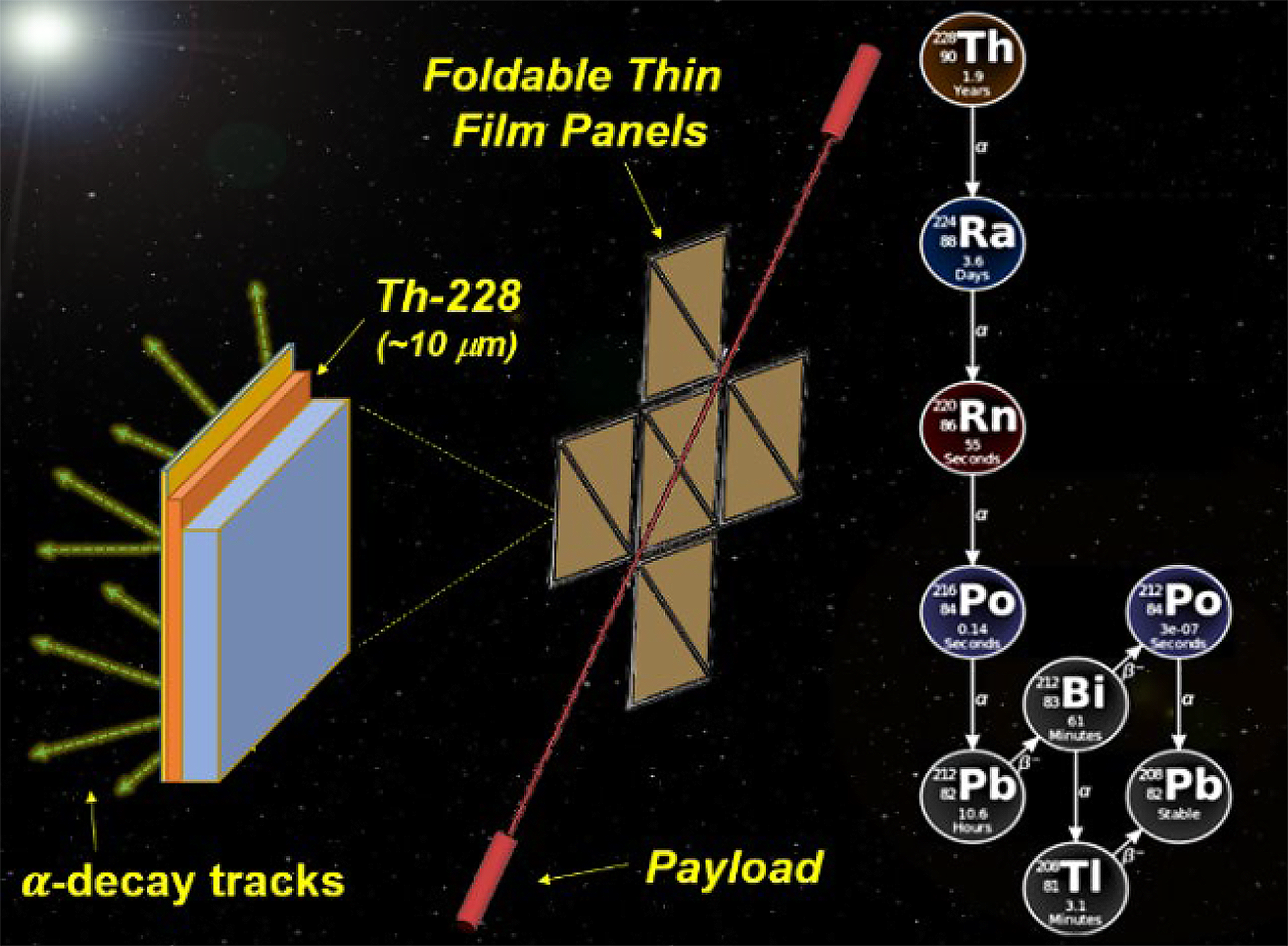
So in the image above, the spacecraft itself is shown in red, the beige panels are the Thorium engine, and on the left-hand side is a close-up view of a panel. It's a radically different geometry than what we're used to imagining for rockets.
Thorium space-propulsion
https://www.nasa.gov/general/thin-film- ... ne-rocket/
Thorium-228 isotope can be used to propel small spacecraft through deep space, helping them to reach very high velocities
from the article:
• Cascading isotope decay chains (Thorium cycle) increases performance by ~500%

So in the image above, the spacecraft itself is shown in red, the beige panels are the Thorium engine, and on the left-hand side is a close-up view of a panel. It's a radically different geometry than what we're used to imagining for rockets.
Re: Indian Space Program: News & Discussion
Chennai space startup Agnikul Cosmos successfully launches Agnibaan rocket with 3D-printed engine, ISRO hails ‘milestone’
Space startup Agnikul Cosmos on May 30 successfully launched its SOrTeD mission, a single-stage launch vehicle demonstration powered by a semi-cryogenic 3D-printed engine.
Re: Indian Space Program: News & Discussion
Congratulations to the team behind the rocket.
Re: Indian Space Program: News & Discussion
Good interviews with Agnikul and its partners
https://youtu.be/pCpRQS82Yn8
https://youtu.be/VKdeo_Dnxh0
https://youtu.be/BPtxccWwVqg
https://youtu.be/pCpRQS82Yn8
https://youtu.be/VKdeo_Dnxh0
https://youtu.be/BPtxccWwVqg
-
akashganga
- BRFite
- Posts: 374
- Joined: 17 Mar 2010 04:12
Re: Indian Space Program: News & Discussion
Congratulations Agnikul team. Agnikul beat ISRO by launching semi-cryo before ISRO. They have done great. Agnikul is more creative compared to other upcoming private launchers in India. Looking forward to the day they launch their first launch to the orbit all using semi-cryo.
-
akashganga
- BRFite
- Posts: 374
- Joined: 17 Mar 2010 04:12
Re: Indian Space Program: News & Discussion
I hope ISRO resumes launches. The stopped launching more than 3 months back which I believe was due to elections. The BJP led government has always supported ISRO and space activities.
Re: Indian Space Program: News & Discussion
I don't think ISRO's launch schedule has anything to do with elections. If they've paused any launching, it's for other reasons.akashganga wrote: ↑08 Jun 2024 00:34 I hope ISRO resumes launches. The stopped launching more than 3 months back which I believe was due to elections. The BJP led government has always supported ISRO and space activities.
Re: Indian Space Program: News & Discussion
Nice summary of the launch in Hindi:
Re: Indian Space Program: News & Discussion
RLV-LEX-03 successful, JSR
https://timesofindia.indiatimes.com/ind ... 200124.cms
https://timesofindia.indiatimes.com/ind ... 200124.cms
Re: Indian Space Program: News & Discussion
Video heresuryag wrote: ↑23 Jun 2024 08:21 RLV-LEX-03 successful, JSR
https://timesofindia.indiatimes.com/ind ... 200124.cms
https://x.com/isro/status/1804709607576834363
It's not completely clear from the angle, but there seems to be no sudden swerve at all during the final couple of seconds before coming to a complete halt like LEX-01 had
Re: Indian Space Program: News & Discussion
Is this full scale mockup? What will be the size of final RLV compared to this?
Re: Indian Space Program: News & Discussion
Good video. Thankfully ISRO (and the poster of the video) left the original sound and did not put any of the stereotypical 'impressive gravitas music' in the background that infects so many of the LCA videos. The real sound without music is much more interesting.hanumadu wrote: ↑23 Jun 2024 15:45Video heresuryag wrote: ↑23 Jun 2024 08:21 RLV-LEX-03 successful, JSR
https://timesofindia.indiatimes.com/ind ... 200124.cms
https://x.com/isro/status/1804709607576834363
The RLV made a 90-degree left turn after being dropped. Good they added a smoke flare. The wind was blowing reasonably hard and the RLV corrected for this while landing. The landing was a lot steadier than the first time. (When was the second test?) . One can hear the whine of a motor at the very end. Perhaps it is running the hydraulics for steering control. (As an aside, lot of bird life in his area. Seems like they came to watch the landing! One can hear a peacock even)
Re: Indian Space Program: News & Discussion
News item: CBI in its chargesheet states that Kerala Cop falsely implicated ISRO scientist Nambi Narayanan in fake espionage case of 1994.
(Supreme Court had awarded a compensation of Rs 50 lakh to Nambi Narayanan for wrongful imprisonment, malicious prosecution and humiliation suffered by him.)
(Supreme Court had awarded a compensation of Rs 50 lakh to Nambi Narayanan for wrongful imprisonment, malicious prosecution and humiliation suffered by him.)
Re: Indian Space Program: News & Discussion
Xpost - in physics dhaga please read the following (and few posts there) about Padm Bhushan Nambi Narayan and his contributions :
posting.php?mode=edit&p=2625439
Some excerpts:
posting.php?mode=edit&p=2625439
Some excerpts:
Also - The Voyager 1 and 2 mission was indeed a groundbreaking success, but it's important to correct some inaccuracies in your post. Firstly, the spacecraft are not heading back towards Earth. Voyager 1 is currently about 14.2 billion miles away from Earth, and Voyager 2 is about 12.1 billion miles away, making them the most distant human-made objects in space.
There was no unforeseen block on communications when the spacecraft approached Uranus. The mission was designed to take advantage of a rare alignment of the outer planets. This alignment --realization that it would allow a spacecraft to visit Jupiter, Saturn, Uranus, and Neptune on a single trajectory.
While Professor Crocco's contribution to the field of astrodynamics is notable, it's not directly related to the Voyager mission. The concept of using gravity assists, also known as slingshots or flybys, was well understood since Newton's time. The Voyager mission built upon this fundamental principle to achieve its remarkable journey.
Dr. Nambi Narayanan, a student of Professor Crocco at Princeton, was actually the one who worked on the trajectory planning for the Voyager mission. Narayanan has credited Crocco's teachings and influence for his own work on the mission. So Although Professor Crocco didn't directly contribute to the Voyager mission, his teachings and legacy influenced Dr. Nambi Narayanan, a former student who worked on the mission's trajectory planning. ..
Let's give credit where it's due and appreciate the incredible achievement of the Voyager mission, which has greatly expanded our understanding of the outer Solar System and beyond!
^^^ Allow me to share this about Padm bhushan Nambi Nayrayan:
- Nambi Narayanan is a renowned Indian aerospace engineer who worked with the Indian Space Research Organisation (ISRO) .
- Narayanan worked on the trajectory planning for the Voyager mission during his time at NASA .
- He was a senior official at ISRO and briefly headed the cryogenics division .
-: Narayanan received I the Padma Bhushan, in 2019
- Narayanan worked at NASA's Jet Propulsion Laboratory (JPL) ( contributed to the Voyager mission's trajectory planning).
- ISRO espionage case: Narayanan was falsely accused in the ISRO espionage case in 1994, but was later cleared of all charges (See my posts in other dhagas)
.
- He faced challenges in his career due to the espionage case, but was eventually cleared of all charges. ( received the Padma Bhushan award in 2019 for his contributions to the field of aerospace engineering.)
- (From what i know his son-in-law Subbiah Arunan, an ISRO scientist (director of the Mars Orbiter Mission)
Re: Indian Space Program: News & Discussion
ISRO Tests Scramjet for Space Use - distinct from military scramjet use
Re: Indian Space Program: News & Discussion
Not exactly Indian Space but this needs to be studied by ISRO
NASA's high efficiency rocket breakthrough.
Rotating detonation cycle
Discover NASA's groundbreaking Rotating Detonation Rocket Engine (RDRE), a high-performance, fuel-efficient marvel set to transform space travel. RDRE is paving the way for more efficient, compact, and affordable rocket motors that could revolutionize both defense and commercial aviation. An inside look at the cutting-edge advancements pushing the boundaries of what's possible in space exploration.
In September 2023, NASA's engineers at the Marshall Space Flight Center in Huntsville, Alabama, achieved a significant milestone by successfully testing a 3D-printed RDRE. This innovative engine ran for over four minutes, producing an impressive 5,800 pounds of thrust. This test was a pivotal moment, showcasing the sustained burn required for critical space maneuvers like lunar landings or deep-space course adjustments.
The RDRE engine generates thrust through detonation — a rapid, supersonic combustion that is more efficient than conventional rocket engine combustion. This method provides more power while consuming less fuel, offering a substantial leap in propulsion efficiency. This significant enhancement aligns perfectly with NASA’s vision for future space exploration, particularly the ambitious Moon to Mars program.
The journey of RDRE began in 2022 with its first hot fire test, which yielded over 4,000 pounds of thrust. Since then, the focus has been on refining the engine's design to handle various thrust levels, accommodating everything from lunar landers to upper-stage spacecraft engines. This versatility could lead to its use in supersonic retropropulsion, a key technique for landing heavier payloads—and potentially humans—on planetary surfaces like Mars.
Engineers at NASA's Glenn Research Center and researchers from Venus Aerospace are also collaborating to scale up this technology, aiming for even higher performance that could transform future space missions. According to NASA's forecasts, RDRE flight hardware—high-performance, fuel-efficient, compact, and affordable rocket motors—will likely first soar aloft by 2030.
The potential applications for RDRE are vast and varied. They could range from Mach 5 attack missiles and hypersonic aircraft for the Defense Department to second-stage launchers, deep-space transports, and lunar and Martian landers for NASA. There is even potential for supersonic transports for the commercial airline industry, highlighting the broad impact this technology could have.
NASA's high efficiency rocket breakthrough.
Rotating detonation cycle
Discover NASA's groundbreaking Rotating Detonation Rocket Engine (RDRE), a high-performance, fuel-efficient marvel set to transform space travel. RDRE is paving the way for more efficient, compact, and affordable rocket motors that could revolutionize both defense and commercial aviation. An inside look at the cutting-edge advancements pushing the boundaries of what's possible in space exploration.
In September 2023, NASA's engineers at the Marshall Space Flight Center in Huntsville, Alabama, achieved a significant milestone by successfully testing a 3D-printed RDRE. This innovative engine ran for over four minutes, producing an impressive 5,800 pounds of thrust. This test was a pivotal moment, showcasing the sustained burn required for critical space maneuvers like lunar landings or deep-space course adjustments.
The RDRE engine generates thrust through detonation — a rapid, supersonic combustion that is more efficient than conventional rocket engine combustion. This method provides more power while consuming less fuel, offering a substantial leap in propulsion efficiency. This significant enhancement aligns perfectly with NASA’s vision for future space exploration, particularly the ambitious Moon to Mars program.
The journey of RDRE began in 2022 with its first hot fire test, which yielded over 4,000 pounds of thrust. Since then, the focus has been on refining the engine's design to handle various thrust levels, accommodating everything from lunar landers to upper-stage spacecraft engines. This versatility could lead to its use in supersonic retropropulsion, a key technique for landing heavier payloads—and potentially humans—on planetary surfaces like Mars.
Engineers at NASA's Glenn Research Center and researchers from Venus Aerospace are also collaborating to scale up this technology, aiming for even higher performance that could transform future space missions. According to NASA's forecasts, RDRE flight hardware—high-performance, fuel-efficient, compact, and affordable rocket motors—will likely first soar aloft by 2030.
The potential applications for RDRE are vast and varied. They could range from Mach 5 attack missiles and hypersonic aircraft for the Defense Department to second-stage launchers, deep-space transports, and lunar and Martian landers for NASA. There is even potential for supersonic transports for the commercial airline industry, highlighting the broad impact this technology could have.
Re: Indian Space Program: News & Discussion
FYI: Some may be interested --Moon will occult, or pass in front of, the planet Saturn in the early morning of 25 July, for the southern and eastern parts of India (see map below).


Re: Indian Space Program: News & Discussion
https://www.business-standard.com/budge ... 570_1.html
Space economy receives Rs 1,000 crore venture capital in Union Budget 2024
https://www.thehindu.com/sci-tech/scien ... 436318.ece
Budget 2024: 18% hike for Department of Space, lion’s share for development of space tech
Space economy receives Rs 1,000 crore venture capital in Union Budget 2024
https://www.thehindu.com/sci-tech/scien ... 436318.ece
Budget 2024: 18% hike for Department of Space, lion’s share for development of space tech
Re: Indian Space Program: News & Discussion
ISRO conducts flight experiment of Air Breathing Propulsion System
The Indian Space Research Organisation (ISRO) successfully carried out the second experimental flight for the demonstration of Air Breathing Propulsion Technology at 07:00 am today. The Propulsion systems were symmetrically mounted on either side of a RH-560 Sounding rocket and launched from Satish Dhawan Space Centre, Sriharikota. The flight test achieved satisfactory performance of the Sounding Rocket along with successful ignition of the Air Breathing propulsion systems. Nearly 110 parameters were monitored during the flight to assess its performance. The flight data from the mission will be useful for the next phase of development of Air Breathing Propulsion systems. Prior to the mission, multiple ground tests were carried out at the various ISRO Centres including Vikram Sarabhai Space Centre (VSSC), Liquid Propulsion Systems Centre (LPSC) & ISRO Propulsion Complex (IPRC) and also at the CSIR -National Aerospace Laboratories (CSIR-NAL), Bengaluru.
RH-560 is a two-stage, solid motor based sub-orbital rocket that is designed to be utilized as a cost-effective flying test bed for the demonstration of advanced technologies. It is the heaviest sounding rocket in the ISRO’s family of sounding rockets and is launched from Sriharikota.
